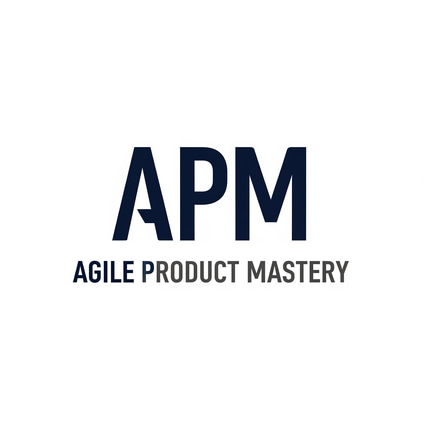7 Easy Steps to Transition from Project Manager to Product Owner
Thinking about transitioning from Project Manager to Product Owner? Learn the key differences, essential skills, and 7 actionable steps to make the shift successfully.
Written by: Matt Gregory - Founder Agile Product Mastery
4/4/20253 min read


Project Management to Product Ownership: Is It the Right Move for You?
You’ve built your reputation delivering projects on time, managing stakeholders, and keeping teams on track. You have the PM qualifications and experience, but organizations are shifting to Agile, and the traditional PM role is evolving. So, where does that leave you? Could transitioning to a Product Owner role be your next step?
The challenge?
Project Managers focus on execution and Product Owners on value. Although switching from delivery to creating product strategy might feel daunting, the good news is your highly transferable leadership, planning, and risk-management abilities.
In this blog, you’ll learn exactly how to make the jump from Project Manager to Product Owner, including the mindset shift, essential skills, and practical steps to land your first Product Owner role.
1. Understand the Key Differences Between Project Managers and Product Owners
While both roles require strong leadership and stakeholder management, their objectives differ:
Project Manager: Focuses on delivering projects on time and within scope. Manages risks, budgets, and execution plans.
Product Owner: Owns the product vision, defines priorities, and maximizes customer value. Works with stakeholders to shape the roadmap.
Key Shift: As a PM, you ensure the project is delivered. As a PO, you ensure the right product is built for the business and users. For example, a PM may ensure a software release happens on schedule, while a PO prioritizes features that drive customer engagement.
2. Develop a Product Mindset
A Project Management mindset is about delivery efficiency, while a product mindset focuses on continuous improvement and value delivery.
To develop this mindset:
Shift from “Are we on track?” to “Are we solving the right problem?”
Learn to prioritize customer needs and wants over project constraints.
Start thinking in terms of roadmaps, OKRs, and business goals.
Some good reads to start building your product thinknig muscle is 'The Lean Startup' by Eric Ries and 'Inspired' by Marty Cagan.
3. Gain Hands-On Experience with Managing Backlogs
One of the biggest gaps for PMs transitioning to PO is managing a product backlog. You’ll need to learn how to:
Finiesse user stories to align with the product vision.
Rank features using prioritization frameworks like MoSCoW, RICE, or WSJF.
Collaborate with engineers to refine your backlog and agree goals in sprint planning.
How? If you’re currently managing project deliverables, start aligning them with product outcomes rather than just timelines.
4. Build Stronger Stakeholder & Customer Engagement Skills
As a PM, you’ve worked with stakeholders to define scope. As a PO, you need to actively influence decisions and advocate for the customer.
How to develop this skill:
Spend more time with users and customers. Learn their pain points.
Practice saying no to feature requests that don’t align with the product strategy.
Improve storytelling: Frame decisions around business value, not just execution.
How? A good way to start doing this is to start pitching why certain features matter to business growth rather than simply reporting project updates.
5. Learn Agile & Scrum Principles in Depth
Most PMs are familiar with Agile, but Product Owners must live and breathe it.
Key areas to focus on are:
Understanding Scrum roles (Scrum Master versus Product Owner).
Write and refine user stories with clear acceptance criteria.
Facilitate sprint planning and backlog grooming sessions.
How? Get your hands dirty by volunteering to refine user stories or lead a sprint demo in your current role.
6. Get Certified (But Focus on Experience First)
A Certified Scrum Product Owner (CSPO) or Professional Scrum Product Owner (PSPO) can boost credibility, but experience should be your priority. Instead of just relying on certificates, be proactive:
Shadow a Product Owner in your organization.
Take ownership of a feature or small product area.
Learn Agile tools such as Jira
How? Lean into user story refinement sessions, jump in and gain real-world backlog management experience.
7. Position Yourself for a Product Owner Role
Once you’ve built the right skills, be proactive and start preparing for a transition
Steps to land your first Product Owner role:
Update your resume to highlight backlog management, product thinking, and business impact.
Network, Network, Network with product managers and Agile coaches. Attend meetups, join LinkedIn groups.
Start small with an Associate PO or hybrid PM/ PO role to gain experience.
How? Showcase in interviews how your PM experience results in product ownership. Talk in terms of outcomes rather than only delivery.
Ultimately, your road to becoming a Product Owner begins now.
Moving from Project Manager to Product Owner changes mindset, priorities, and strategy more than just a job title.
By developing a product-first mindset, mastering backlog management, improving customer engagement, and gaining hands-on Agile experience, you’ll be well on your way to success in Product Ownership.
Ready to master your Product Owner journey?
Grab your copy of Agile Product Mastery: The Product Owner's Playbook to Strategy, Execution & Influence and take your skills to the next level.
© Agile Product Mastery — Build a career that scales. Not one that burns out.
Powered by Baltimore Advisory Pty Ltd — ABN 97 678 312 475 — All rights reserved
Follow us on LinkedIn
